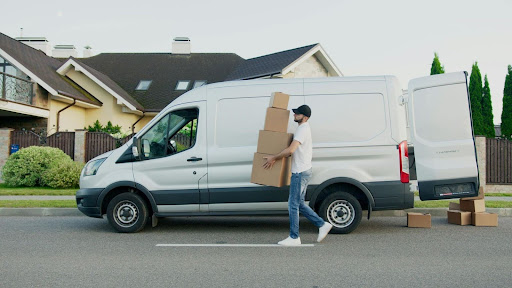Before embarking on your long-distance move, it is critical to be equipped with a plan and the right strategies to ensure a smooth transition.
This preparation includes everything from initial planning to what you should have on hand when you arrive at your new home.
Creating a Comprehensive Moving Plan
Your long-distance move starts with a detailed moving plan. It should outline every step of your move, from organising what needs to be packed to setting a moving date.
Establish a timeline that includes important tasks and deadlines to keep everything on track. Utilise a moving checklist to stay organised and ensure nothing is overlooked.
Decluttering and Downsizing
Before you start packing, declutter your space. Sort through your belongings and decide what to keep, sell, donate, or discard.
By downsizing your possessions, you’ll have fewer items to pack and move, which can save you money and reduce stress on moving day.
Packing Strategies and Materials
Packing efficiently is paramount for a long-distance move. Gather strong packing materials and boxes designed for moving.
Wrap fragile items carefully, use bubble wrap and packing paper, and consider hiring professional packers for valuable items. Clearly label each box with its contents and intended room for easy unpacking.
Research and Select a Reputable Moving Company
It’s vital to choose a reputable moving company well in advance.
Research moving companies and read reviews. Obtain several in-home estimates and ask about their liability and moving insurance options to protect your belongings during transit.
Distance Considerations
Acknowledge the challenges of moving long distance. It involves longer travel times and higher stakes, making it imperative to secure a schedule that allows for delays or unforeseen circumstances.
Ensure that the moving company you select has experience with long-distance moves and can commit to your timeframe.
Finalising Move-In Day Essentials
Prepare an essentials box with items you’ll need immediately upon arrival, such as toiletries, a change of clothes, and basic tools.
Confirm move-in day requirements with your movers, like parking permits or building access, to avoid any last-minute issues. Remember, a successful move requires foresight and precise organisation.
On the Move
When it’s finally time to move, managing the chaos of moving day, ensuring the welfare of your family and pets, handling the necessary paperwork for utilities and services, and settling into your new home are crucial steps.
Understanding and Managing Moving Day
On moving day, have your checklist at the ready and follow your schedule closely. Ensure that each box is accounted for during the loading process.
Once at your destination, oversee the unloading, checking items off your list as they come off the truck. An essentials box should be one of the first to unload, containing items you’ll need immediately at your new home.
Ensuring Pets and Family Welfare
Relocating is stressful for everyone, including your pets. Make sure they have a comfortable rest area during transit and at the new home.
Keep your family informed of the day’s schedule and ensure regular breaks are taken to rest and rejuvenate.
Handling Utilities and Paperwork
Before moving day, organise the disconnection of utilities at your current address and the reconnection at your new home.
This includes electricity, gas, water, and internet services. Have all your paperwork in order, including leases or purchase documents, insurance policies, and utility agreements.
Post-Move Essentials
After completing a long-distance move, it’s time to transition from the planning phase to establishing your new life. Prioritise a structured approach to unpacking and updating your details, and ease into your new community with confidence.
Unpacking and Setting Up
Begin unpacking by targeting the household items you require immediately such as bedding, toiletries, and kitchenware. Set up these areas first:
- Bedroom: Assemble your bed and arrange your clothing.
- Bathroom: Place your toiletries and towels.
- Kitchen: Unpack necessary utensils, plates, and appliances.
Updating Important Documents
It’s crucial to update your important documents promptly. Here’s a quick checklist:
- Update your address with the Australian Postal Corporation for mail redirection.
- Notify relevant government bodies, like the Department of Transport, for driver’s licence and vehicle registration.
- Inform your bank, insurance providers, and utility companies of your new address.
Settling into the New Neighborhood
Acquaint yourself with your new surroundings to feel at home. Explore these aspects:
- Local amenities: Locate supermarkets, medical centres, and entertainment venues.
- Transport: Familiarise yourself with public transport options or traffic patterns for commuting.
- Community engagement: Join local groups or networks to meet neighbours and make connections.
Finalising Transfer Services
Ensure all transfer services are completed to avoid inconvenience:
- Confirm the termination of services at your old address, such as electricity, gas, and broadband.
- Verify activation of services in your new home, checking for any issues that may require a service call.
By focusing on these key tasks, you can navigate the post-move phase with assurance and settle into your new environment smoothly.
(Featured Images – Pexels Royalty Free)


